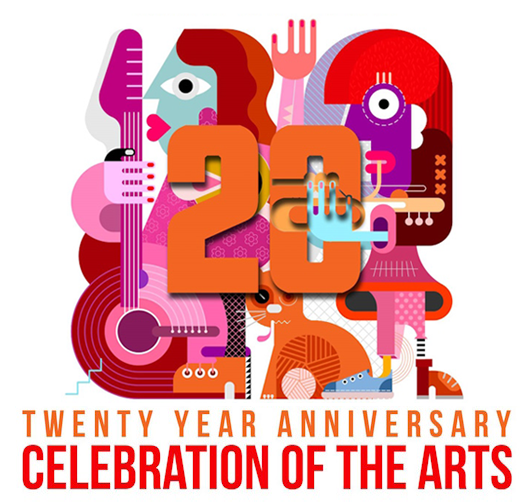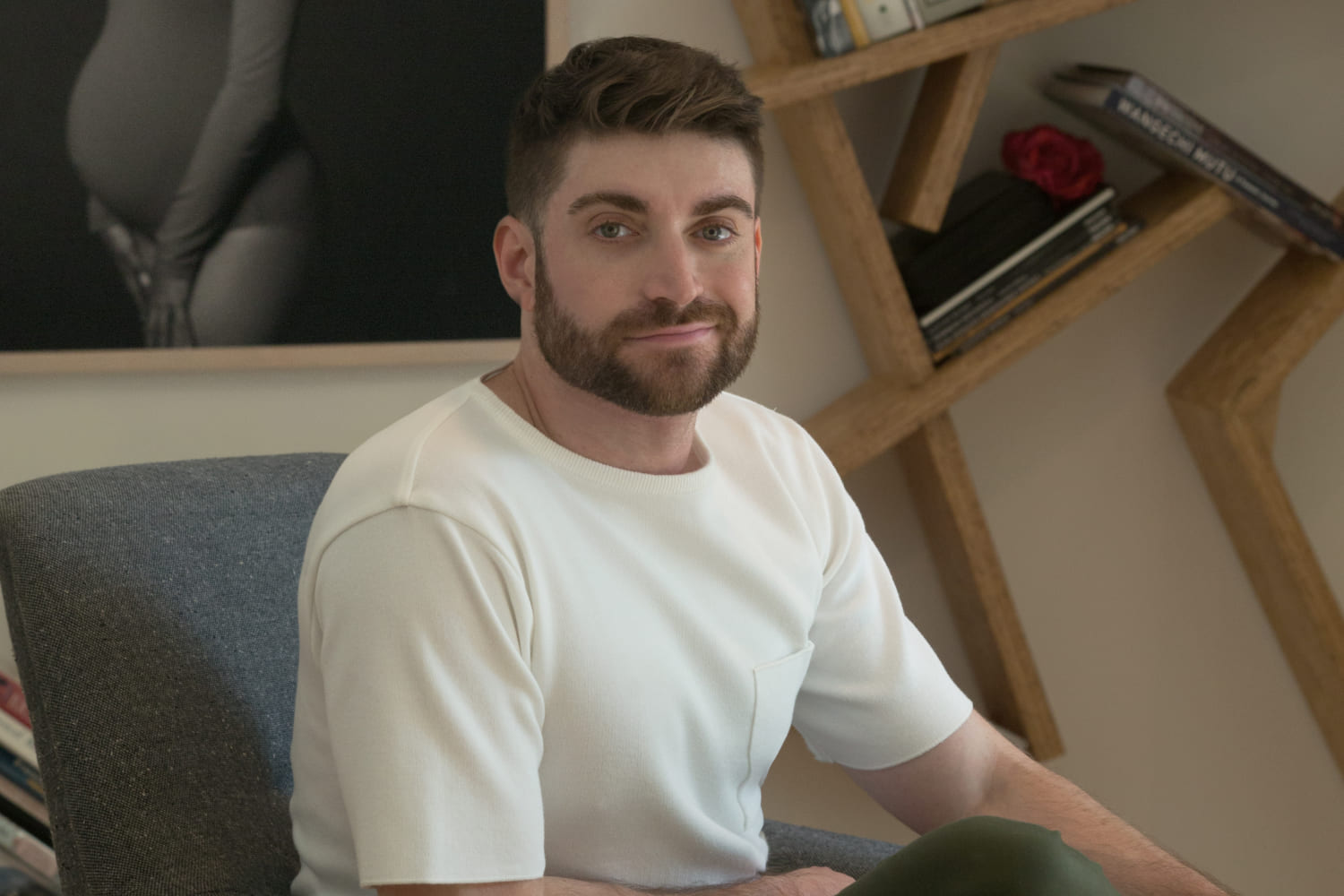
Self Portrait from the Artist, David Gary Lloyd, 2025 (Photo courtesy of David Gary Lloyd)
When David Gary Lloyd was in high school, living in conservative Annapolis, Md., his sister took a photography class. Little did he know it would spark his own interest in photography and lead to his life’s calling in the visual arts.
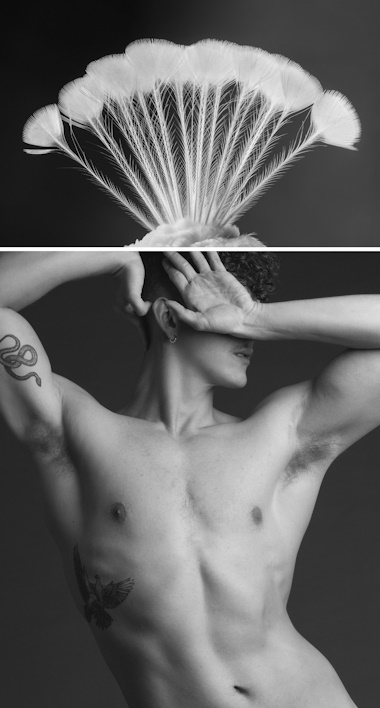
“Serpent, Dove, Crown” from "Garden Shadows of the Sun" by David Gary Lloyd, 2025 (Photo courtesy of David Gary Lloyd)
As a shy and closeted teenager, Lloyd connected with the solitariness of the craft. He started when photographs were film, not digital, and developed in a dark room, a process he found meditative. More than that, it allowed him to explore another side of himself through photography shoots. When he would stage photography shoots with women, glamorously dressing them up, no one knew how truly personal it was to him. He realized photography was his voice-a way to communicate ideas, thoughts, and concepts in an entirely visual way.
He went on to attend the Savannah College of Art and Design (SCAD), earning BFAs in photography and graphic design. He came to Miami in 2009 after graduating from the school, immersing himself in the still-burgeoning Wynwood art scene.
Now, 16 years later, with his work encompassing photography, digital painting, and mixed media, and a stint as a Teaching Artist at the Perez Art Museum Miami (PAMM), he finds himself in a successful spot.
His work has been featured in exhibitions at places such as the Boca Raton Museum of Art and the Coral Gables Museum, and in publications like Harper’s Bazaar Brazil and Wallpaper Magazine.
Front and center now for Lloyd is “Garden Shadows of the Sun,” his solo exhibition in Coral Gables at 255 Alhambra Circle, where the lobby has been turned into a gallery space of sorts. It immediately captured my attention when seeing a photograph on Instagram announcing its opening.
At the opening, we arranged to meet for an interview and tour the exhibition. (The interview has been edited for space and clarity)
miamiartzine: In the exhibition, you paired photographs of Florida fauna, such as flamingos and peacocks, known to display queer behaviors, with portraits of local LGBTQ+ people, creating a symbolic linkage between their respective behaviors of queerness. What interested you to explore this concept and narrative?
David Gary Lloyd: For one, as a gay male trying to find my place in the world and understand myself more, looking to things I relate to and connect with, the queer community being one. But two, what's outside of that, you know? And in nature, the more research I started doing the more interesting it became to me when seeing there are mirrored patterns showing how natural being queer is. I always knew I was gay. It was never a question. But having that evidence and seeing-because we're constantly reminded it's wrong and a sin-how nature interacts and works, how it’s a blueprint for other things, solidifies queerness in a certain way.
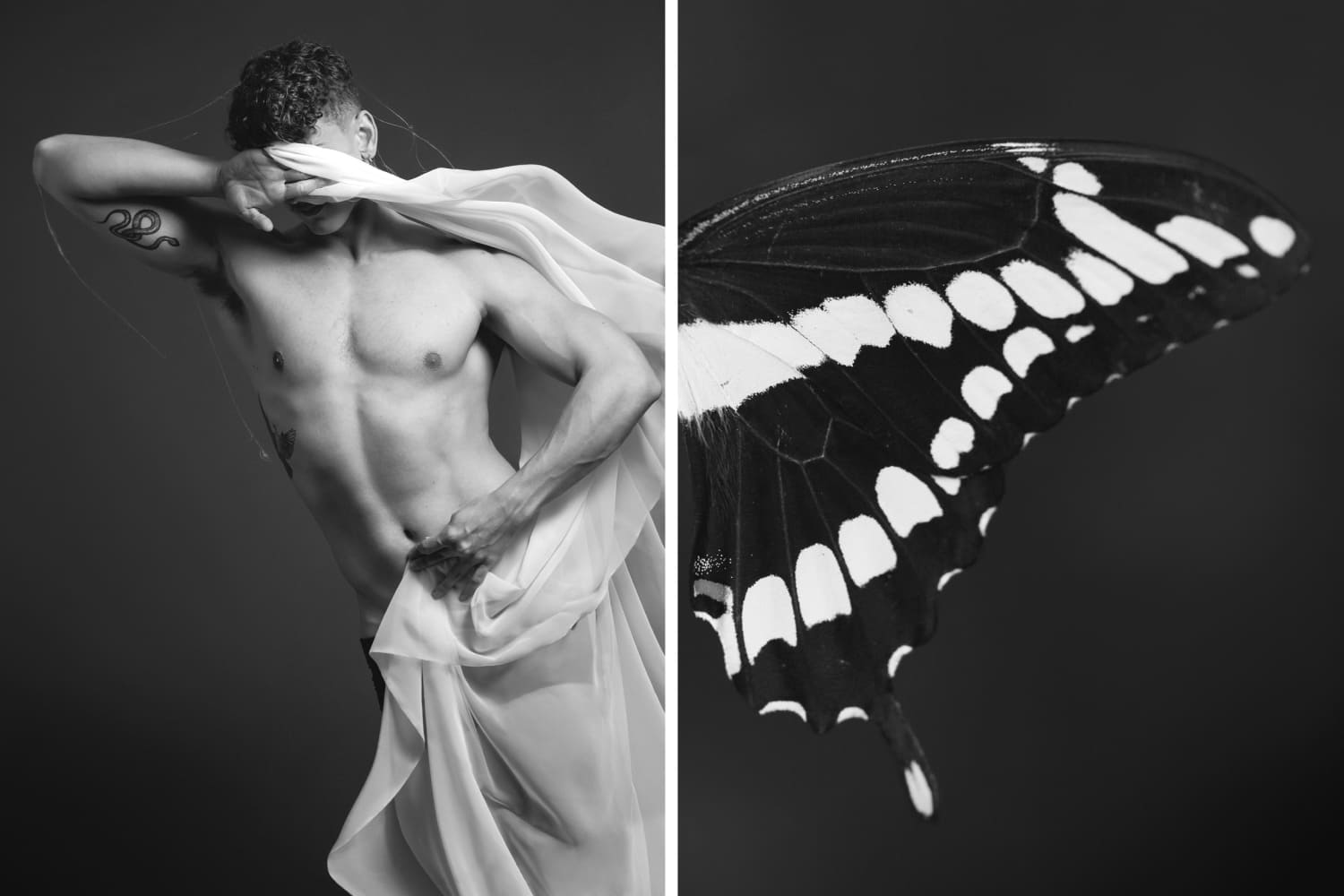
“Creation” from "Garden Shadows of the Sun" by David Gary Lloyd, 2025 (Photo courtesy of David Gary Lloyd)
maz: Can you explain the focus on Florida?
DGL: I focused on creatures found in Florida because the show really is about Florida. There's a broader concept, obviously, with our LGBTQ+ history and those elements. But Florida is a battleground state for queer rights, and so much dialogue and conversation about the queer political agenda is created here with (Florida Governor Ron) DeSantis and the Don’t Say Gay bill and everything. I thought it was important to connect that and show creatures in Florida and the local queer community, interacting together in a way people aren't used to seeing, and presenting a different side for people to look at the queer community. And, in Florida people showed me, especially during this last election in Miami, how conservative it actually is. It empowered me to want to speak up about a topic I know very well. It took me a long time to find what my point of view was, but I love nature and the queer community, and I was slowly finding how those links connected in my work. It just serendipitously came together that way.
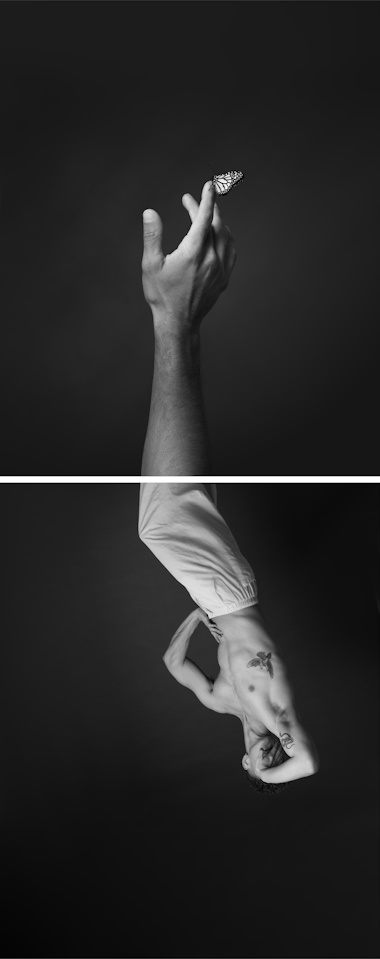
“Two Bodies” from Garden Shadows of the Sun by David Gary Lloyd, 2025 (Photo courtesy of David Gary Lloyd)
maz: There’s a historic use of coded signifiers and symbols to convey queerness in your work. Were you already aware of them or was this newly discovered in creating this work?
DGL: There's so much interesting history with how symbols and coded language have been created within the queer community. We can look at contemporary ideas, such as pride and rainbow flags to identify queerness. But looking at history, like the 1800s, one of my favorite discoveries was the green carnation Oscar Wilde used in his collective group of people associating with the queer community as a signifier that, “Okay, yeah, you're queer. We can talk to each other. We know we have that in common,” whereas any other passerby wouldn't know what that means. The more you dive into history some things aren't as concrete because that's a very documented example. This show explores the concepts and ideas that there is more to look at throughout history and art history to clue us into those communicative methods that were being used very discreetly and with only people at the time using them to know.
This show is the base structure moving forward of how I am approaching my work, grounded in those symbols, those ideas of communicating and connecting with people in ways that regular passersby wouldn’t know. There's symbolism in this show I don't think people even realize. For example, the piece of Sundari, a triptych called “Stardust.” It's the pink work.
maz: Yes, it's beautiful. Can you talk more about it?
DGL: The color scheme in it is the bisexual flag-pink, blue, and purple, a modern-day symbol. And Sundari is bisexual, so I'm communicating their bisexuality through that color scheme. That's just one way of interpreting how we can use symbols as a form of communication. I know many people would walk by the piece and not make that connection.
maz: I didn’t. I’m glad you pointed it out.
DGL: It's a more subtle type of symbolism. It also shows how subtle symbolism has been in the past in communicating those ideas. If it was all rainbow, it hits you over the head, so I tried to avoid stereotypical tropes and do things that were more “aha” moments.
maz: With the exhibition space being a lobby in an office building, what sort of feedback or reactions have you received? Anything that has surprised you, or even perhaps that didn't?
DGL: It's been wonderful to be in such a high traffic space. People come in and out of work here every day and getting to communicate and talk to them has been amazing.

“Gilded Crysalis” from "Garden Shadows of the Sun" by David Gary Lloyd, 2025 (Photo courtesy of David Gary Lloyd)
With that said, and it being somewhat public art, there are going to be people who don't agree with it and don't like it, and that has definitely come up. Unfortunately we did have to censor some and cover them up. However, for me, I see it as a blessing in disguise, because it reiterates the show's statement and what it is about-how queerness throughout history has faced opposition and had to be hidden and communicated through symbols. Even today, in 2025, with work I personally don’t feel is racy or offensive, or sexual in any way . . people still find things to complain about. I don't know if it's because it's a show about queerness or if people are offended from seeing the male torso without clothing on. Whatever it might be, I'm not sure, but I can't help but think it has something to do with the fact that it is a queer show and queer bodies that people are looking at. (Terranova Corporation) has been very supportive in trying to come up with a solution to make the work accessible and enjoyable for everyone. But it's been very eye-opening.
maz: Do you have a favorite work in the exhibition? If so, what can you tell me about it?
DGL: "Hold the Sky for Icarus," which is one of the pieces that unfortunately was censored. To me the piece represents the queer community in a more abstract way. I’m relating to the Greek mythology of Icarus, the boy who was given wings made of wax, and when he takes flight for the first time, he flies so high that the sun melts his wings and he falls. I love the sort of metaphor to the queer community-progressing through history, having to test your limits and push the limits, and fly as high as you can.
maz: Looking beyond “Garden Shadows of the Sun,” what are you working on next?
DGL: I'm working on this project more. I hope to have this show continue, expanding to other venues in the state to tell the stories and the dialogue of Florida’s queer community. This show is very specific to South Florida, because that's where my inspiration has come from, but I'm working on touring the show, building it even more, and continuing these dialogues. I also do fine art commissions, so I'm constantly doing that. But I'm in the solo show mood now and looking for venues that want to host me and these kinds of exhibitions.
WHAT: David Gary Lloyd: “Garden Shadows of the Sun”
WHERE: Lobby of 255 Alhambra Circle, Coral Gables
WHEN: 8 a.m. to 6 p.m. Monday through Friday, 8 a.m. to 1 p.m. Saturday. Through Sept. 15.
HOW MUCH: Free
INFORMATION: Complimentary artist-led exhibition tours can be arranged with Lloyd at www.davidgarylloyd.com or @davidgarylloyd on Instagram.
